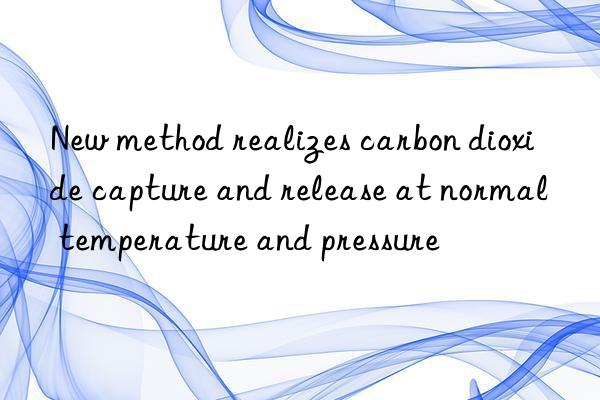
The University of Science and Technology of China announced on April 23 that Professor Liu Bo of the school, Professor Xu Qiang of the Southern University of Science and Technology and King Abdullah University of Science and Technology Cafer T. In cooperation with Professor Yavuz, the first example of using carbon dioxide as a guest molecule to simulate the structure of carbon dioxide hydrate was developed, using cheap guanidine sulfate and carbon dioxide to co-crystallize to form a stable clathrate, achieving reversible capture and release of carbon dioxide under ambient temperature and pressure conditions .
Carbon capture is an important part of carbon capture utilization and storage technology (CCUS), which is of great significance to the realization of the national "double carbon" strategic goal, and is also an important source of "green carbon" in the future. At present, carbon dioxide capture is mainly accomplished by physical or chemical adsorption processes based on pressure and temperature swings. The physical adsorbent uses a porous material with a high specific surface area, and carbon dioxide molecules enter the pores of the adsorbent through weak interactions. Although it has the advantages of low heat of adsorption and easy regeneration, the water vapor in the flue gas and the environment competes with carbon dioxide molecules for adsorption, which greatly reduces the selectivity, capacity and cycle performance of the adsorbent. Although chemical adsorbents such as ethanolamine (MEA) and organic guanidine have high selectivity, the regeneration process of the adsorbent requires huge energy consumption.
Recently, Professor Liu Bo's research group and collaborators' team applied dynamic hydrogen bond framework structure transformation to carbon dioxide capture. Under normal temperature and pressure conditions, successfully simulated the dynamic behavior of carbon dioxide hydrate, and developed a new carbon dioxide capture and storage method. Carbon dioxide and guanidine sulfate co-crystallize to form clathrates to achieve a single selective capture of carbon dioxide, and release high-purity carbon dioxide with low energy consumption through the collapse of the clathrate structure. The obtained guanidine sulfate can be directly used in the next cycle to achieve low energy consumption Carbon capture cycle.
This research work proposes a new technology for carbon dioxide capture based on supramolecular structural transformation. Compared with the existing technology, this technology has the advantages of high selectivity, low energy consumption, stable and non-corrosive adsorbent, suitable for storage and transportation, and the guanidine sulfate aqueous solution after releasing pure carbon dioxide can be directly used for a new round of capture. Next, the research team will actively promote the evaluation of energy consumption and cost of carbon capture on a small and medium scale, in order to realize the superiority of carbon capture in terms of energy consumption and economy.



 微信扫一扫打赏
微信扫一扫打赏
